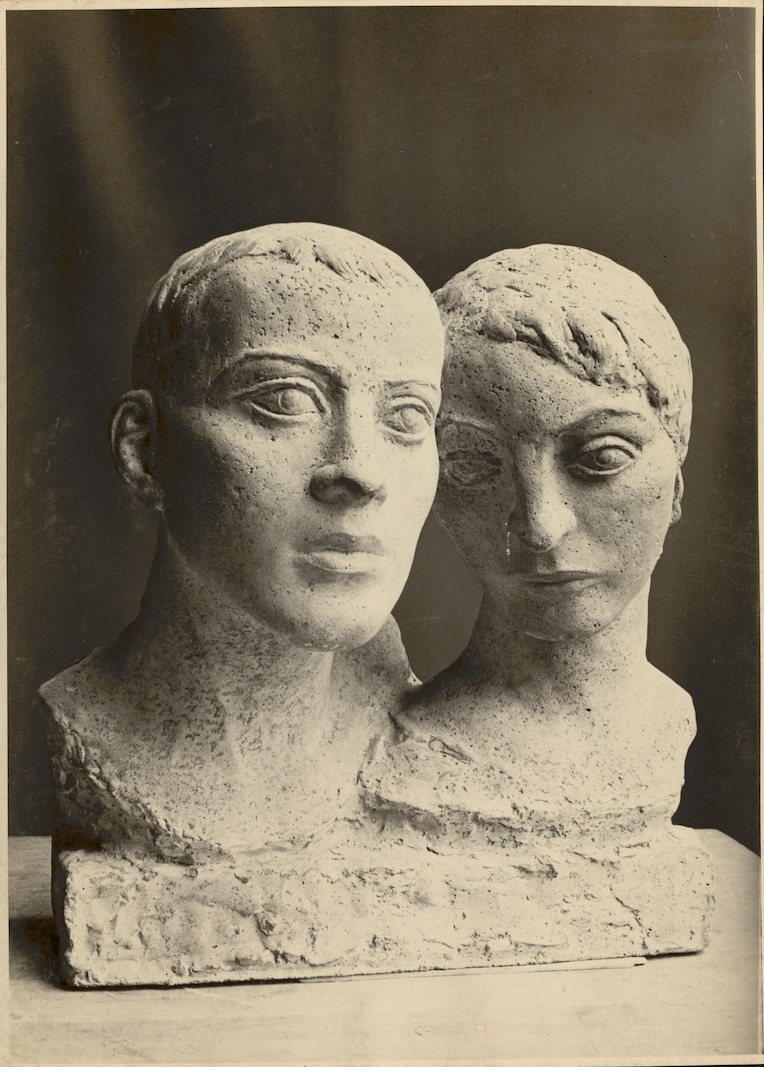

Fred Kormis – Sculpting the Twentieth Century
Presentation by Barbara Warnock, London (England)
January 8, 2025 @ 12:00 pm - 1:00 pm
| FreeBorn in 1894 in Frankfurt into an Austrian and German Jewish family, Fred Kormis’ life and career were shaped and disrupted by some of the most significant events of the twentieth century. Kormis saw action and was wounded in the First World War as part of the Austrian army, before being held for four years as a prisoner of war in Siberia.
Image above: Fred Kormis, Two Heads, c. 1930s © Wiener Holocaust Library Collections
He worked as an artist during the politically and culturally tumultuous Weimar period, and during the Nazi era revealed himself to be Jewish, a decision that led to the removal of his art from galleries. Kormis and his wife Rachel Sender left Germany in 1933, and many of the works he left behind in Germany were lost. In exile in relative poverty in Britain from 1934, Kormis formed deep links with many in the Jewish refugee community in London.

Fred Kormis, Portrait of a Man, c. 1915-20. Woodcut printed on oriental laid paper © Wiener Holocaust Library collections

Fred Kormis, Adam and Eve, 1986. Bronze resin
During the war, he had to rebuild his life and career once again, when his studio and much of the work he had produced in Britain were destroyed in an air raid. Kormis’ artistic practice was varied and evolved over time, but his experiences as a prisoner of war created in him a lifelong preoccupation with memorialising and representing in sculptural form the emotional impact of captivity. This theme culminated in the 1960s in his Prisoner of War and Concentration Camp Victim memorial in Gladstone Park in London.


Dr Barbara Warnock is the Senior Curator and Head of Education at The Wiener Holocaust Library, where she oversees the education programme and has curated the exhibitions Jewish Resistance to the Holocaust; Berlin London: The Lost Photographs of Gerty Simon; Fighting Antisemitism from Dreyfus to Today, and Forgotten Victims: The Nazi Genocide of the Roma and Sinti, amongst others. She is the author (with John March) of Berlin-London: The Lost Photographs of Gerty Simon (2019), a Spectator Book of the Year, and the editor of Anti-Antisemitism: Countering Anti-Jewish Racism in Western Europe, 1890-2022 (2022). She has written a number of articles on refugee history, the Nazi persecution of Roma and the history of The Wiener Holocaust Library. She obtained her doctorate in Austrian history from Birkbeck College, University of London, in 2016. She was for many years a history teacher and examiner.

The Wiener Holocaust Library in London, the world’s oldest and Britain’s largest archive on the Nazi era and the Holocaust, received a collection for Fred (Fritz) Kormis’ documents and photographs in 1986. Their exhibition Fred Kormis – Sculpting the Twentieth Century reunites some of the most important of his diverse works, borrowed from major institutions in the UK. It is on view until February 6, 2025.
A book publication contains personal reflections of Kormis by David Aronsohn, and expert assessments of the sculptor’s extraordinary life, work and legacy.
This event is part of the online series “Flight or Fight. stories of artists under repression.” It is co-sponsored by The Wiener Holocaust Library.
Please donate generously to make programs like this possible. Thank you.
The Fritz Ascher Society is a not-for-profit 501(c)3 organization. Your donation is fully tax deductible.


